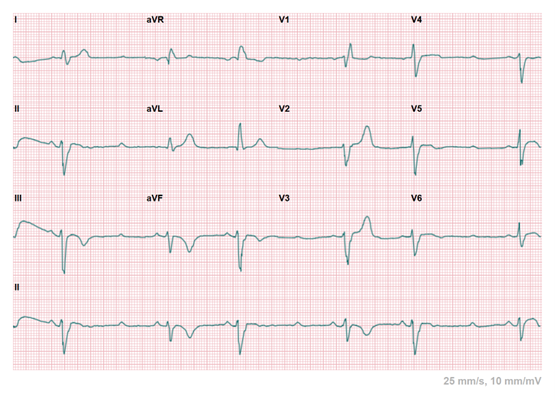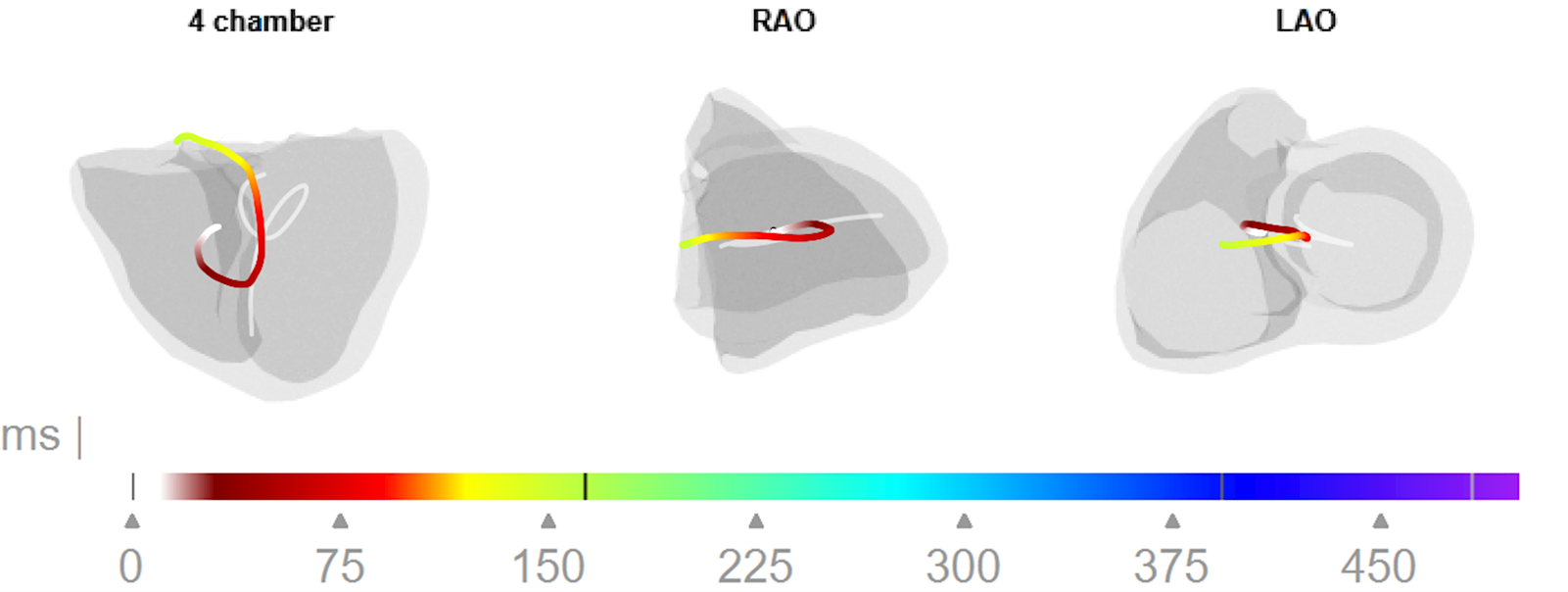Occasionally we write a blog to present CineECG applied to detect more complex conduction disorders. And in this case it's really a complex one. Which has resulted in many many hours of ECG interpretation by the best of the best cardiologists. For the experts: The complexity of this case is due to the two level AV-junctional conduction block, resulting in group beating bradycardia with the combination of a right bundle branch (RBB) and a left anterior fascicle (LAF) Wenckebach block combined with a Mobitz II block of the left posterior fascicle (LPF). The ECG is shown here below

CineECG supports the ECG interpretation challenge by offering additional views on how the activation flows through the heart.
There’s much more detail available regarding this complex progressive conduction block case and if you want to learn more you can read the full case study in the recent edition of the Journal of Electrocardiology. Below is the CineECG which represents the QRS complex after the first P wave
The full CineECG visualization is shown here where we show again the 4 chamber view accopanied by the right anterior oblique and the left anterior oblique
This case study has been written down by @Iris van der Schaaf of UMC Utrecht and Ton Gorgels and they have done a great job. If you want to learn more on how CineECG can help you as a medical professional in ECG interpretation you can find more information on the CineECG website.

CineECG supports the ECG interpretation challenge by offering additional views on how the activation flows through the heart.
There’s much more detail available regarding this complex progressive conduction block case and if you want to learn more you can read the full case study in the recent edition of the Journal of Electrocardiology. Below is the CineECG which represents the QRS complex after the first P wave

The full CineECG visualization is shown here where we show again the 4 chamber view accopanied by the right anterior oblique and the left anterior oblique

This case study has been written down by @Iris van der Schaaf of UMC Utrecht and Ton Gorgels and they have done a great job. If you want to learn more on how CineECG can help you as a medical professional in ECG interpretation you can find more information on the CineECG website.
Share our website